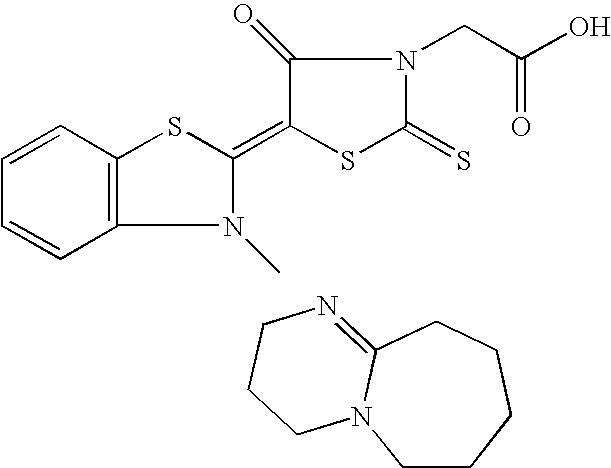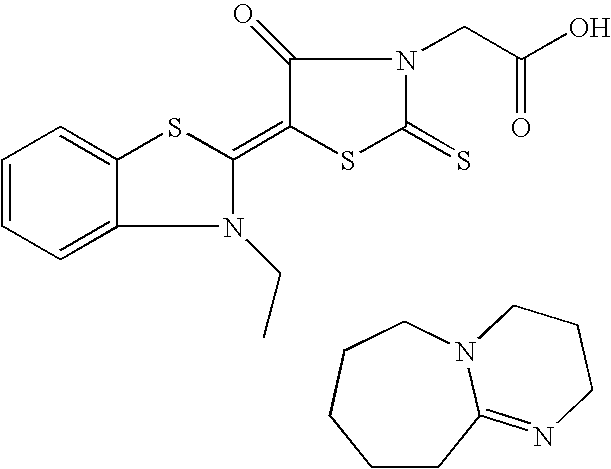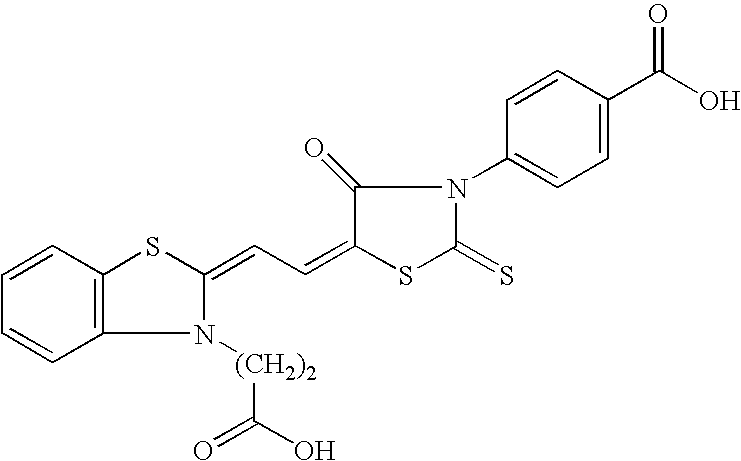Process for preparing nano-porous metal oxide semiconductor layers
a technology of nano-porous metal oxide and semiconductor layers, which is applied in the direction of electrolytic capacitors, light-sensitive devices, power plants, etc., can solve the problems of high temperature needed for making nano-porous metal oxide semiconductor layers for graetzel photovoltaic cells, prohibitive high temperature for making photovoltaic cells on plastic and flexible substrates, and inability to work with titanium dioxide particles made by wet precipitation process
- Summary
- Abstract
- Description
- Claims
- Application Information
AI Technical Summary
Benefits of technology
Problems solved by technology
Method used
Image
Examples
example 1
Preparation of Titanium Dioxide Nano Dispersions
Dispersion 1:
[0064]P25 a nano-sized titanium dioxide with a mean particle size of 25 nm and a specific surface of 55 m2 / g from DEGUSSA was mixed with ethanol to give a 25% by weight of solid material and then treated ultrasonically to produce Dispersion 1.
Dispersion 2:
[0065]285 g of Ti-isopropoxide, 1800 mL of deionized water and 12.5 mL of nitric acid were stirred overnight at 80° C. without a cover. The total volume was made up to 1400 mL with deionized water and then autoclaved at 230° C. for 14 hours. The concentration of the autoclaved colloid was reduced by evaporation to 16.2% by weight of solid material and then sufficient ethanol added to give a final solids content of 10.8% by weight, thereby producing Dispersion 2 (mean particle size of 13 nm, specific surface area 120 m2 / g).
Dispersion 3:
[0066]Ti-Nanoxide™ T from SOLARONIX, having a mean particle size of 13 nm, a specific surface of 120 m2 / g and containing 11% by weight of t...
example 2
Low Temperature Heat Treatment After High Pressure Sintering
[0092]Photovoltaic devices were prepared as described for Device numbers 46 to 49 except that the titanium dioxide layer thicknesses were different and that after sintering the titanium dioxide layers were heated for 5 minutes at 150° C. before drying. The short circuit currents obtained with these devices, Devices 50 to 52, together with details over their titanium dioxide layer thickness and processing are given in Table 5 together with the results for Devices 46 to 49.
[0093]
TABLE 5HeatPost-pressureLayerpretreatmentSinteringsintering heatingthicknessIscDeviceTiO2 dispersionat 450° C.conditionstemperature [° C.](μm)[mA / cm2]46 (inv)3Yespressure—1.82.7747 (inv)3Yespressure—2.02.5048 (inv)3Yespressure—2.22.5449 (inv)3Yespressure—2.42.8550 (inv)3Yespressure1500.92.0551 (inv)3Yespressure1501.12.5352 (inv)3Yespressure1501.43.03
Taking into account the increase in short-circuit current with increasing titanium dioxide layer thickn...
PUM
| Property | Measurement | Unit |
|---|---|---|
| temperature | aaaaa | aaaaa |
| temperature | aaaaa | aaaaa |
| pressure | aaaaa | aaaaa |
Abstract
Description
Claims
Application Information
 Login to View More
Login to View More - R&D
- Intellectual Property
- Life Sciences
- Materials
- Tech Scout
- Unparalleled Data Quality
- Higher Quality Content
- 60% Fewer Hallucinations
Browse by: Latest US Patents, China's latest patents, Technical Efficacy Thesaurus, Application Domain, Technology Topic, Popular Technical Reports.
© 2025 PatSnap. All rights reserved.Legal|Privacy policy|Modern Slavery Act Transparency Statement|Sitemap|About US| Contact US: help@patsnap.com



